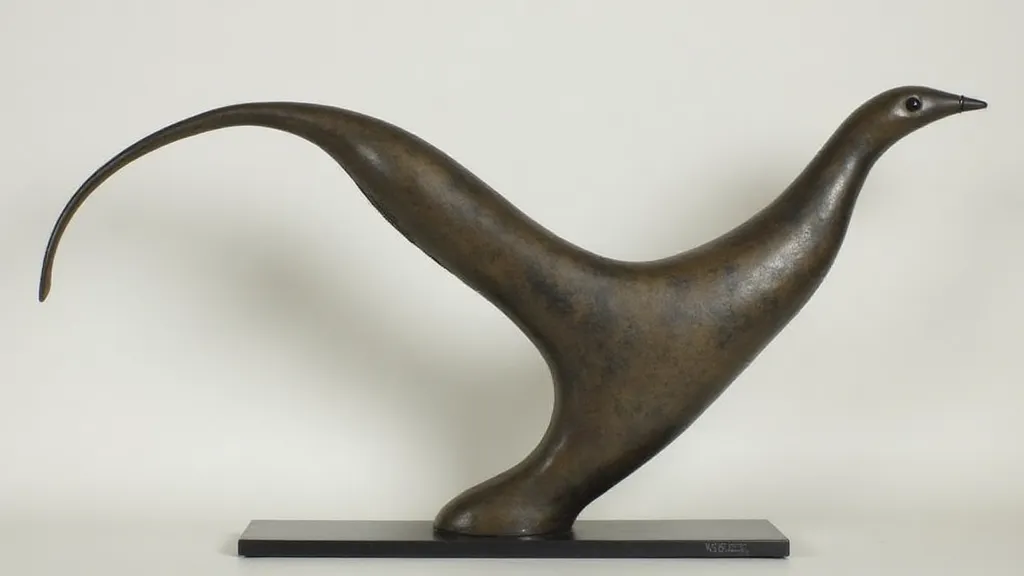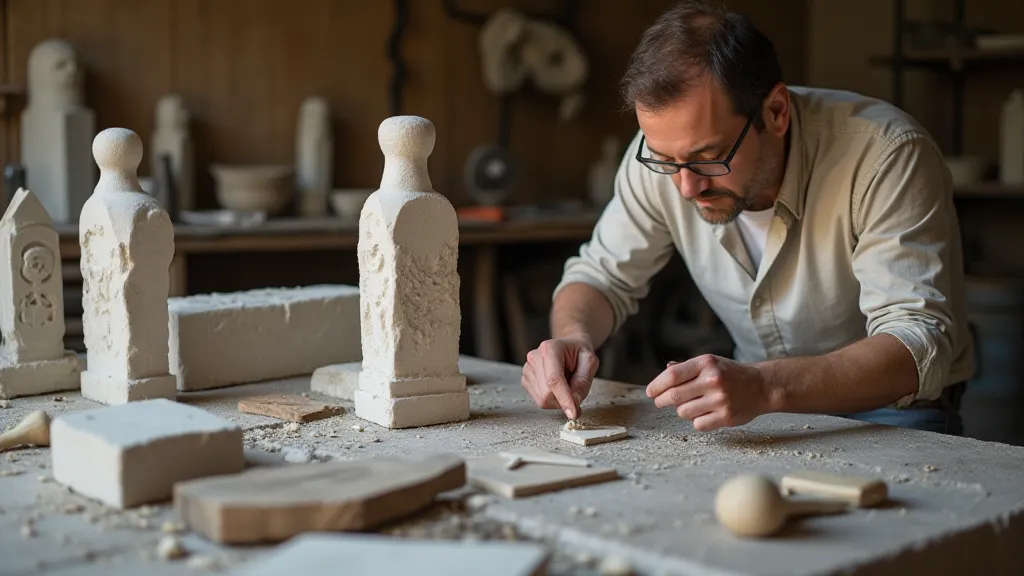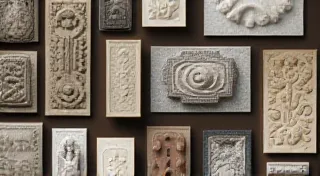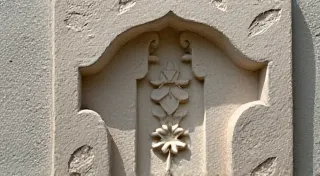Inspiration from Stone Carving Masters
The world of stone carving is vast and intricate, a testament to human creativity and the enduring beauty of natural materials. For aspiring stone carvers, and indeed for all who appreciate art, the work of past masters offers a boundless source of inspiration. This article explores the contributions of several renowned stone carving artists, examining their unique techniques, styles, and the enduring legacy they’s left behind. We'll delve into how their approaches can inform and elevate your own artistic journey, and provide insight into the caring for stone carvings needed to preserve their beauty for generations.
Early Influences: Ancient and Classical Masters
Before the rise of modern art movements, stone carving flourished in ancient civilizations. The Egyptians, Greeks, and Romans were prolific sculptors, leaving behind monumental works that continue to awe us today. Egyptian sculpture, characterized by its rigidity and symbolism, often depicted pharaohs and deities with idealized forms and hieroglyphic inscriptions. The precision and scale of these works are remarkable, demonstrating a sophisticated understanding of stone properties and carving techniques. Understanding the properties of these materials is essential to replicating these techniques or even just appreciating the challenges faced by the original artists.
Greek sculpture, particularly during the Classical period, emphasized naturalism and the ideal human form. Artists like Phidias, whose work adorned the Parthenon, and Praxiteles, known for his graceful depictions of Aphrodite, sought to capture beauty and movement in marble. Their mastery of anatomy and drapery remains a benchmark for figurative sculpture. Selecting the right stone is crucial to achieving these effects; understanding choosing the right stone for your project can make a significant difference in the final outcome. The challenges of sourcing and preparing the marble itself are often overlooked, and were significant hurdles for artists of the era.
Roman sculpture, while heavily influenced by Greek aesthetics, developed its own distinct style, incorporating portraiture and narrative relief sculpture. The Romans used stone carving to commemorate emperors, generals, and public events, preserving a detailed record of their history and culture. Their understanding of how to create durable outdoor art, often through innovative construction methods, is still relevant today. Many of the Roman methods translate surprisingly well to creating durable stone carving for garden art.
Understanding the techniques and philosophies of these early masters provides a fundamental understanding of stone carving’s history and evolution. The process of quarrying, transporting, and preparing the stone was as important as the carving itself, often involving extensive engineering projects.
Michelangelo: The Renaissance Giant
Michelangelo Buonarroti, a true Renaissance polymath, is arguably the most famous sculptor in history. His colossal marble statue of David stands as a symbol of Florentine power and artistic genius. Michelangelo's approach to sculpture was revolutionary. He believed that the sculptor's role was to “liberate” the form already present within the stone. He often worked directly with the stone, using sharp blows of the chisel to reveal the figure within. This subtractive process demanded an intimate knowledge of the material and a profound sense of spatial awareness. The level of detail achievable through this process is astonishing, and demonstrates a mastery of both material and execution. It is easy to appreciate the skill needed to produce these works from a distance, but truly understanding the effort and dedication requires considering the realities of the tools and techniques available at the time. The importance of selecting the right material, like the Carrara marble, can’t be overstated.
His Pieta, housed in St. Peter's Basilica, is a masterpiece of emotion and technical skill. The incredible detail, the fluidity of the drapery, and the poignant portrayal of grief demonstrate Michelangelo's unparalleled mastery of the medium. Studying his works encourages a deep understanding of anatomy, composition, and the power of expressive form. The challenge of ensuring the longevity of such monumental pieces, often exposed to the elements, would have also been a significant concern for his contemporaries.

Auguste Rodin: Impressionism in Stone
Auguste Rodin, a leading figure in the Impressionist movement, challenged traditional notions of sculpture. He embraced a more expressive and tactile approach, prioritizing surface texture and emotional impact over anatomical accuracy. His most famous work, "The Thinker," embodies this philosophy. The figure’s rough, fragmented surface and intense gaze convey a sense of profound contemplation. The way Rodin utilizes the stone’s natural variations to achieve this expressive quality is remarkable; for those interested in more advanced techniques, it’s worth investigating modern stone carving techniques including power tools. These tools can accelerate the process, but require a different skillset and understanding of the material to avoid damaging the stone.
Rodin's use of stone was innovative. He often left tool marks visible on the surface, rejecting the smooth, polished finish favored by earlier sculptors. This allowed him to capture the process of creation and to convey a sense of spontaneity and vitality. Studying Rodin's work encourages experimentation with texture and surface treatment. The evolution of tools and techniques, from traditional hand chisels to modern pneumatic tools, has profoundly impacted the aesthetic possibilities of stone carving.
Constantin Brâncuși: Simplicity and Abstraction
Constantin Brâncuși, a Romanian sculptor, pioneered a radical approach to abstraction in sculpture. His works stripped away all unnecessary detail, reducing forms to their most essential elements. "Bird in Space," for example, is an iconic representation of pure form, conveying a sense of lightness and ascension. The process of achieving this level of polish and refinement is painstaking, and requires not just skill but dedication. Even after the sculpting is complete, proper care is crucial; you might be interested in learning more about caring for your stone carvings to ensure their longevity. Understanding the science behind the materials, from the mineral composition to the way they respond to weathering, is crucial for achieving this kind of lasting beauty.
Brâncuși’s techniques emphasized polishing and refinement. He believed that the beauty of the stone itself was paramount and sought to reveal its inherent qualities through meticulous craftsmanship. He often used inexpensive materials like serpentine and alabaster, demonstrating that artistic expression doesn't require expensive resources. Studying Brâncuși’s work highlights the power of simplicity and the importance of material exploration. His approach also underscores the importance of understanding the geological processes that create these stones, and how they impact the carving process.

Ernesto Neto: Contemporary Stone Explorations
Contemporary stone carving continues to evolve, pushing boundaries and incorporating new technologies and perspectives. Ernesto Neto, a Brazilian artist, blends sculpture and architecture to create immersive, interactive environments. While primarily known for his textile installations, his explorations of natural forms and his attention to sensory experience are directly relevant to stone carvers. His work reminds us that the definition of sculpture continues to expand, incorporating elements of performance, architecture, and even installation art.
Neto’s approach is less about subtractive carving and more about additive processes, often incorporating found materials and unconventional techniques. He encourages a playful and experimental approach to the medium, blurring the lines between sculpture and installation. His methods show a refreshing disregard for tradition and a willingness to embrace new possibilities.
Learning from the Masters: Applying Inspiration to Your Own Work
The works of these masters offer a wealth of lessons for aspiring stone carvers. Here are a few key takeaways:
- Study Anatomy and Form: Understanding the underlying structure of your subject is essential for creating realistic and compelling sculptures.
- Experiment with Texture and Surface Treatment: Don’t be afraid to embrace roughness, tool marks, or unconventional finishes.
- Explore Material Properties: Each type of stone has its own unique characteristics. Learn how to exploit these qualities to achieve different effects.
- Embrace Abstraction: Simplify forms, explore negative space, and push the boundaries of representation.
- Find Your Own Voice: Inspiration is valuable, but ultimately, your work should reflect your own unique perspective and artistic vision.

The legacy of stone carving masters is not simply about replicating their techniques; it's about drawing inspiration from their creativity, their perseverance, and their unwavering commitment to the art form. Consider the variety of styles and techniques utilized throughout history - from the meticulous detail of Michelangelo to the abstract simplicity of Brancusi. Each approach offers unique insights into the potential of stone as a medium. Selecting the right type of stone is, of course, crucial for achieving your artistic vision. Different stones lend themselves to different carving techniques, whether it’s the subtractive process favored by Michelangelo or the additive approaches explored by contemporary artists. Understanding the geological history of a particular stone, and how its composition affects its carving properties, is a valuable skill for any sculptor. The challenges of sourcing sustainable and ethically produced stone are also becoming increasingly important considerations for contemporary artists.
The future of stone carving looks bright, with new technologies and materials constantly pushing the boundaries of what’s possible. Combining traditional skills with modern approaches will undoubtedly lead to exciting new forms of artistic expression. The interplay between the artist, the stone, and the environment will continue to be a source of inspiration for generations to come.





